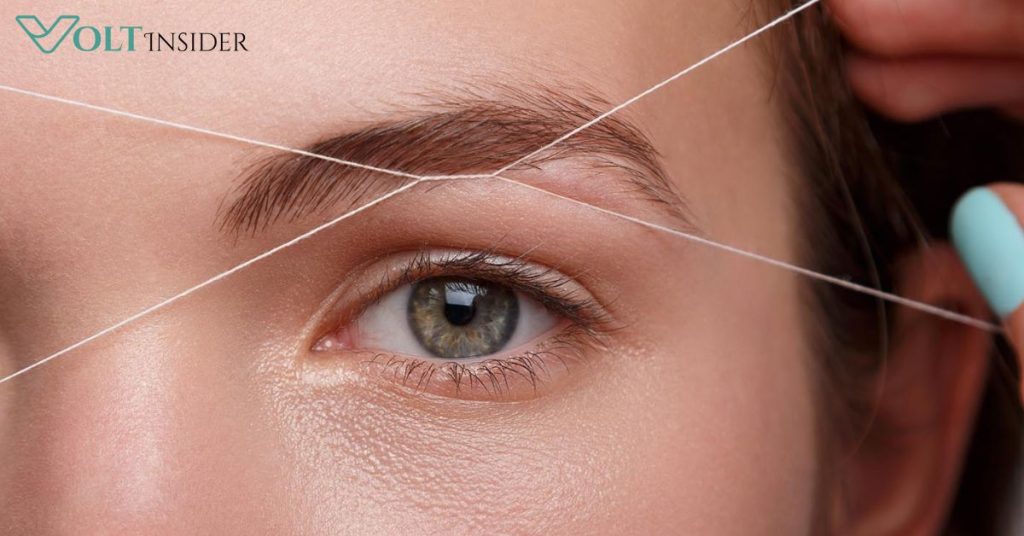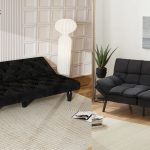Introduction to Eyebrow Threading
Eyebrow threading has surged in popularity in recent years as an artful and precise method to shape and define brows. Unlike traditional plucking or waxing, eyebrow threading involves a skilled technician using a thin, twisted cotton thread to remove unwanted hair with remarkable accuracy. This technique is believed to have originated in South Asia and the Middle East centuries ago but has become a global beauty staple for those seeking perfectly shaped eyebrows.
The allure of eyebrow threading lies not only in its precision but also in its relatively gentle impact on the skin. Many beauty experts and enthusiasts favor threading because it avoids harsh chemicals and minimizes irritation, making it suitable for sensitive skin types. In today’s beauty landscape, where well-groomed brows frame the face and elevate one’s overall look, understanding this method is essential for anyone aiming for flawless results.
By the end of this comprehensive guide, you will be well-equipped with knowledge about how eyebrow threading works, its benefits compared to other hair removal techniques, how to prepare for a session, and essential aftercare tips to keep your brows looking fresh and sharp. Whether you’re a threading newbie or looking to switch from waxing or tweezing, this guide will provide you with everything you need to know to achieve the perfect brow shape safely and effectively.
How Eyebrow Threading Works: The Technique Explained
Eyebrow threading is a precise and effective hair removal technique that has been practiced for centuries, originating from South Asia and the Middle East. Unlike waxing or tweezing, threading involves using a thin cotton or polyester thread to remove unwanted hair from the follicle level.
The Threading Technique
The process begins with a trained professional holding a piece of thread, typically cotton, between their fingers. The thread is twisted into a loop and rolled over the targeted area, trapping and lifting hairs from the roots. This method allows for the removal of multiple hairs simultaneously, providing a clean and defined shape.
One of the key advantages of threading is its precision. It enables the technician to shape the eyebrows with great accuracy, ensuring a symmetrical and well-defined look. This level of control makes threading particularly suitable for individuals seeking a specific brow shape or those with sensitive skin.
Duration and Pain Level
A typical eyebrow threading session lasts between 10 to 15 minutes, depending on the complexity of the desired shape and the technician’s skill level. While some individuals may experience mild discomfort during the procedure, many find it less painful than waxing. The sensation is often described as a quick pinch, and any redness or irritation usually subsides shortly after the session.
It’s important to note that threading should be performed by a trained professional to ensure safety and optimal results. Attempting to thread eyebrows without proper technique can lead to uneven shapes or skin irritation.
Benefits of Eyebrow Threading Over Other Hair Removal Methods
Eyebrow threading offers several advantages over traditional hair removal methods like waxing and tweezing. Understanding these benefits can help you decide if threading is the right choice for achieving your desired brow shape.
Precision and Control
Threading allows for meticulous control, enabling the removal of even the finest hairs with precision. This level of accuracy ensures symmetrical and well-defined brows, making it ideal for those seeking a specific shape or arch. Unlike waxing, which can sometimes remove more hair than intended, threading targets individual hairs, providing a cleaner and more controlled result.
Gentler on Sensitive Skin
For individuals with sensitive skin, threading is often a preferable option. The technique involves using a cotton thread to lift hairs directly from the follicle, without the application of heat or chemicals. This method minimizes the risk of irritation, redness, or allergic reactions, making it suitable for those with conditions like eczema or acne-prone skin.
Longer-Lasting Results
Threading removes hair from the root, leading to slower regrowth compared to methods like tweezing. Many individuals find that their brows stay defined for up to four weeks after a threading session. This longevity reduces the frequency of touch-ups, saving time and effort in your beauty routine.
Reduced Risk of Ingrown Hairs
Unlike waxing, which can sometimes break hairs below the skin’s surface, threading removes hairs entirely from the follicle. This complete removal reduces the likelihood of ingrown hairs, leading to smoother skin and less irritation.
Suitable for All Skin Types
Threading is versatile and can be performed on various skin types, including those with oily, dry, or combination skin. Its adaptability makes it a popular choice for individuals seeking a reliable and effective hair removal method.
While threading offers numerous benefits, it’s essential to consider your personal preferences and skin type when choosing a hair removal method. Consulting with a professional can help determine the best approach for achieving your desired brow shape.
Preparing for Your Threading Appointment: Tips and What to Expect
Proper preparation can enhance your eyebrow threading experience, ensuring optimal results and minimizing discomfort. Here’s how to get ready for your appointment:
Grow Out Your Eyebrows
Allow your eyebrow hairs to grow for at least two to four weeks before your threading session. This growth period ensures that there’s enough hair for the thread to grip and remove effectively from the root. If the hair is too short, the thread may not catch it properly, leading to uneven or incomplete hair removal.
Exfoliate Gently
A day or two before your appointment, gently exfoliate the skin around your eyebrows to remove dead skin cells. This helps minimize the risk of ingrown hairs and makes the threading process smoother. Avoid exfoliating on the day of your appointment to prevent irritation.
Clean Your Face
Arrive at your appointment with a clean face. Remove all makeup, especially around your eyebrows. Clean skin ensures that the threading process is hygienic and reduces the likelihood of post-threading breakouts.
Skip the Moisturizer
Do not apply moisturizer or any oily products around your eyebrows before your session. Oily skin can make it difficult for the thread to grip the hair, making the process less effective.
Choose the Right Technician
Research and select a reputable threading professional. Look for reviews, ask for recommendations, and ensure the salon maintains high hygiene standards. A skilled technician will ensure precise shaping and minimize discomfort.
Aftercare and Maintenance for Long-Lasting, Beautiful Brows
Proper aftercare is essential to ensure that your freshly threaded eyebrows remain flawless and irritation-free. Here’s how to care for your brows post-threading:
Soothe and Protect the Area
Immediately after threading, the skin may appear slightly red or feel sensitive. To alleviate this:
- Cold Compress: Apply a cold compress wrapped in a clean cloth to the brow area for 10-15 minutes to reduce redness and swelling.
- Aloe Vera Gel: Apply a thin layer of aloe vera gel to soothe irritation and promote healing.
- Avoid Touching: Refrain from touching the threaded area to prevent introducing bacteria and causing potential breakouts.
Skip Makeup for 24 Hours
Avoid applying makeup around the threaded area for at least 24 hours. This allows the skin to heal and prevents clogged pores that could lead to breakouts.
Protect from Sun Exposure
The skin around your eyebrows can be more sensitive after threading. Apply sunscreen with SPF 30 or higher daily and avoid direct sunlight for at least 24 hours after your appointment.
Maintain Cleanliness
Gently cleanse the threaded area with a mild, non-exfoliating cleanser. Avoid using harsh products that can irritate the sensitive skin.
Source: Glowupstudio / Growthzilla
Schedule Regular Touch-Ups
To keep your brows looking their best, schedule threading appointments every 3 to 6 weeks, depending on your hair growth cycle. Regular sessions help maintain the desired shape and reduce discomfort over time.
Conclusion
Eyebrow threading stands out as a precise, natural, and skin-friendly method for achieving beautifully shaped brows. With its origins in South Asia and the Middle East, this technique has gained global popularity for its ability to deliver detailed results without the use of chemicals or heat.
By understanding the threading process, preparing adequately, and adhering to proper aftercare, you can enjoy well-defined brows that enhance your facial features. Remember, the key to maintaining perfect brows lies in choosing a skilled technician, following pre-appointment guidelines, and committing to aftercare practices that promote healing and longevity.
Frequently Asked Questions (FAQs)
- How often should I get my eyebrows threaded?
- It’s generally recommended to schedule threading appointments every 3 to 6 weeks, depending on your hair growth cycle. This frequency helps maintain the desired shape and reduces discomfort over time.
- Can I thread my eyebrows if I have sensitive skin?
- Yes, threading is often preferred by individuals with sensitive skin because it avoids the use of harsh chemicals and minimizes irritation. However, it’s essential to consult with a professional to ensure it’s the right method for your skin type.
- Will threading cause my eyebrows to grow back thicker?
- No, threading removes hair from the root, and over time, it can actually lead to finer regrowth. Unlike shaving, which can cause hair to feel coarser, threading offers a more natural regrowth pattern.
- Is there any downtime after eyebrow threading?
- While some redness or sensitivity may occur immediately after threading, there’s typically no significant downtime. Following proper aftercare can help minimize any temporary irritation and promote quick healing.






